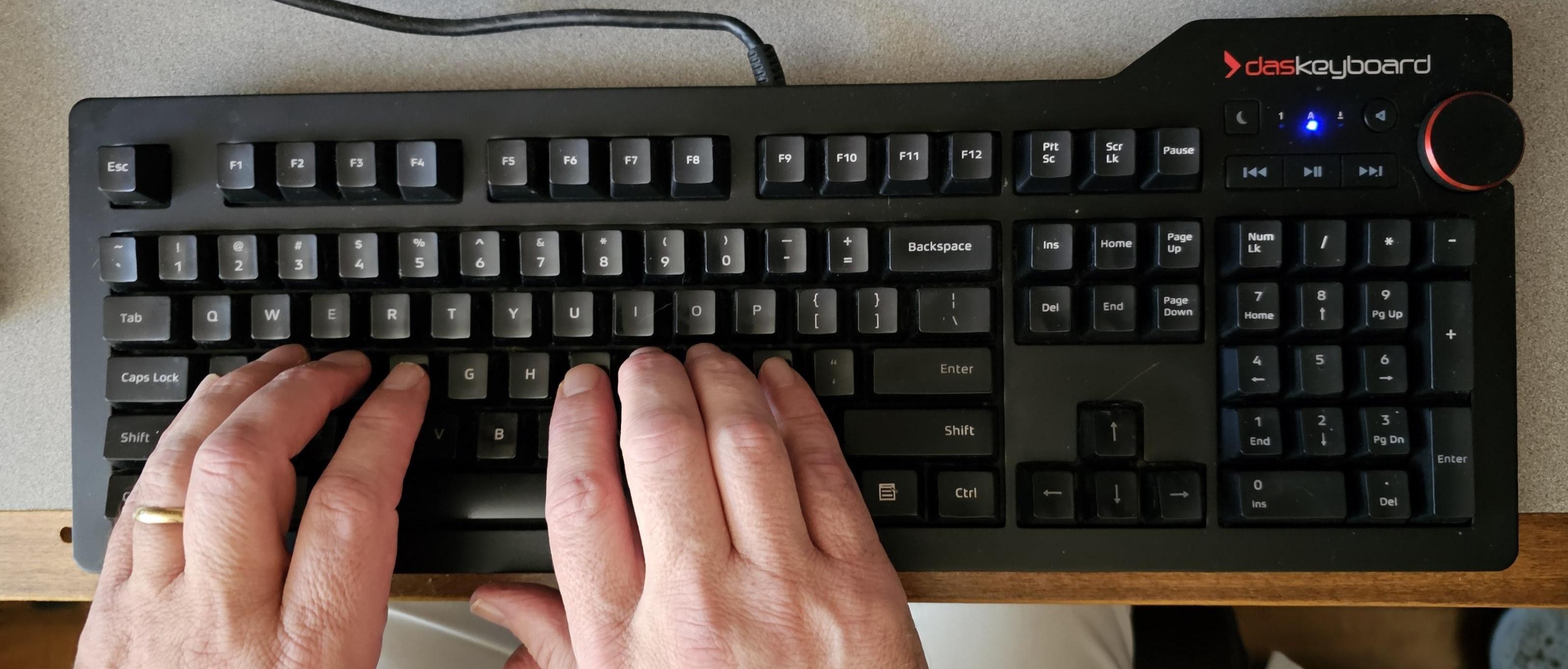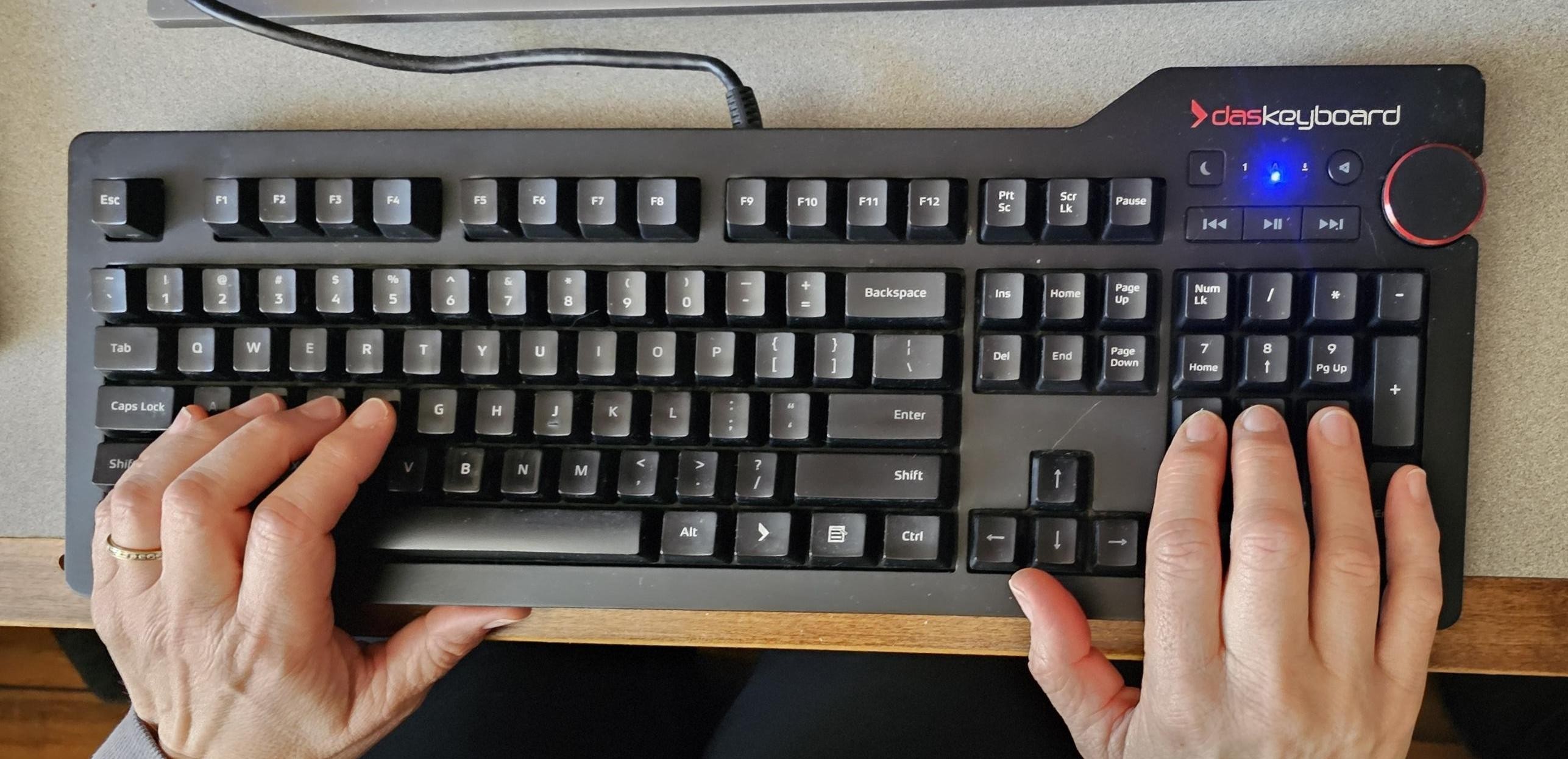Using a Keyboard
If you are in the business world, or something closely related, then you will find your self spending lots of time on a computer.
If you do find yourself in front of the computer a lot then probably one of the best things you can do is to learn how to properly use a keyboard.
The funny thing is, it’s not that hard. But you do need to practice. You need a lot of practice. Fortunately, you can consider all the time you spend on a computer to be practice - if you are using good fingering.
I think of a friend who used to be a finger type’r. He got pretty fast, but nothing approaching the spreed of a touch typist. Because he was using one finger. You just cannot approach the speeds you get when you use all 10 fingers to type. There’s less motion, so it just comes out slower for a finger type’r
Some rules
The home position.

When you start to type, put your fingers in the home position. Many keyboards (the better ones) will have a bump or something on the ‘f’ and ‘j’ keys to help your index fingers find those keys.
When you type. Use the finger that is closet to the letter you want to press.
If you are a finger type’r type, do not worry if your typing speed has slowed down. At the beginning that may be true, but as you train your fingers to click the proper keys, your typing speed will quick pass your pecking speed.
As your fingers learn the keyboard, and you develop muscle memory, your typing speed will increase.
Capital letters
When capitalizing a letter, you want to use the opposite pinky to press the shift key.
For example for capital A, your right pinky holds down the shift key, your left pinky taps the A button.

Numbers
Good luck there. I don’t know the rules. I use the finger that is closest to the digit I want to press. However, If I’m doing lots of numbers I use the number pad.

The Number Pad
Regarding numbers. Once I took an accounting class, and the instructor was adamant about learning the 10 key if we were going to pursue a career involving numbers.
He told a story about receiving a call on a Thursday to do an interview on Monday. He spent pretty much that whole weekend practicing the 10key with numbers from a phone book. He was able to demonstrate use of the 10key and feels that gave him a competative advantage over other people in his age group also looking for jobs.
The Best Keyboard.
To me there are a couple of categories of keyboards.
84 vs 101 key keyboards
One category is 84 vs 101 key keyboards.
The 84 key keyboards look similar to the keyboard on the old typewriters. The 101 key has an extra numeric keyboard.
Some keyboards have extra buttons which end up with more than 84 or 101 keys but they still fit in those categories.
Personally, i favor the 101 key keyboard. Sometimes I’m doing a lot of numbers, and the 101 is better for that. I also like that the arrow keys are moved away.
Pros of the 84 key keyboard
- Occupies less table space
Pros of the 101
- Keys are not generally jammed together
- Arrow keys easier to use
- Sometimes I use number pad
Click
Another category of keyboard could be the type of keys. I think these fall into 2 categories as well. Capacitance and mechanical. Capacitance keyboards are common on laptops.
Pros of Capacitance
- The keyboard can be made cheaper (or less costlier)
Pros of mechanical
- Some of them have a click to help you know that the key has been pressed
- Some Vendors will strive to build better ‘quality’ keyboards when they are made with mechanical keys.
I think touch typist prefers the feel of the mechanical keyboard. I certainly do. I use a mechanical keyboard plugged into my laptop because the the laptop keyboard is just not as good as the mechanical keyboard. I feel I am more productive using the mechanical keyboard.
Your second keyboard.
If you are in the market to replace your keyboard, what I have found is some manufacturers change the layout of the arrow keys. It’s amazing how quickly I will hate a keyboard when the arrows are not in the right place.
So my advise, look at the arrow keys on your current keyboard and make sure your replacement keyboard has that same layout - if possible.
Ergonomic keyboards
I’ve had 2 ergonomic keyboards. I don’t keep them long- and eventually switch back to the mechanical’s.
On the one hand when the keys are bent into the right direction, I do feel an improvement to my hands and wrist.
One thing, I will sit behind my desk and use it for 8-10 hours a day. I tend to shift around a lot. And when I do that shift. I notice one wrist is less comfortable than the other.
These days I would say get up and walk around every 30 minutes (even if it’s just to walk around the cube - 10-30 seconds may be sufficient)
While I’m okay with the ergonomic keyboard, I have found I switch back. Maybe I miss the mechanical click. Maybe a new brand includes back lighting? Or a usb port.
